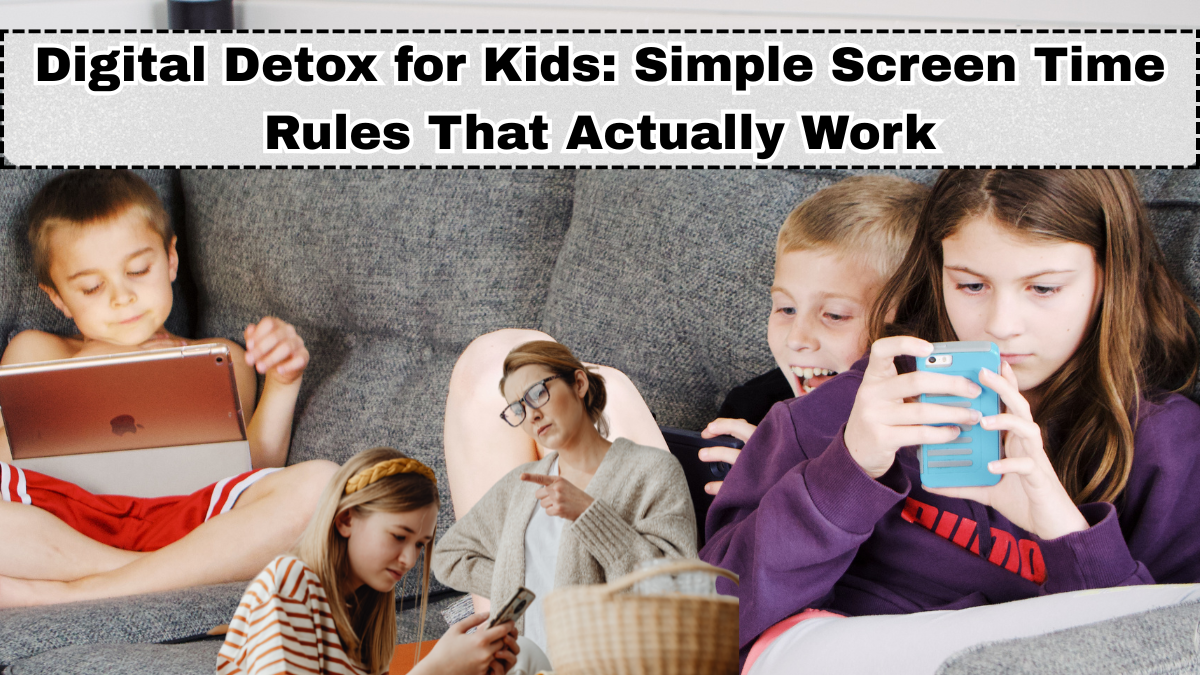Kids today grow up surrounded by mobiles, tablets and endless online distractions. Reducing screen time often feels like a daily argument for parents. A parenting digital detox for kids approach works only when rules are simple, consistent and designed around your child’s routine—not strict punishments or shouting.
Here are practical strategies Indian parents are using successfully in 2025.

Set Clear Screen Time Limits Based on Age
Kids respond better when limits feel predictable. Instead of banning gadgets suddenly, create age-appropriate screen windows.
General guidelines include:
-
3–6 years: 30–45 minutes
-
7–12 years: 1–1.5 hours
-
13–16 years: 2 hours
Keeping fixed timings avoids random usage throughout the day.
Create Gadget-Free Zones Inside the House
Designated gadget-free spaces help children break the habit of reaching for screens out of boredom.
Effective zones are:
-
Dining table
-
Bedroom after 9 PM
-
Study table during homework
When the environment encourages offline time, kids follow the rules more easily.
Replace Screen Time with Engaging Alternatives
Kids don’t quit screens unless they get something equally interesting. Introduce simple low-cost activities that match their energy.
Popular options include:
-
Drawing or craft
-
Helping with small kitchen tasks
-
Board games or puzzles
-
Evening outdoor play
These activities engage kids mentally and reduce dependence on screens.
Use Parental Controls Without Making It a Fight
Modern devices offer screen limits and app locks. Use them subtly to create healthy boundaries.
Useful settings include:
-
App time limits
-
Content filters
-
Break reminders
These help regulate behaviour without arguments or repeated instructions.
Lead the Digital Detox by Example
Kids copy what they see. When parents scroll constantly, children feel screens are normal. A small behavioural shift from adults creates a major impact.
Try these habits:
-
No phone during meals
-
Charge devices outside the bedroom
-
Spend 20 minutes of quality offline time with kids
Children respond better to presence than strict discipline.
Conclusion
FAQs
Is complete screen ban recommended?
No. Controlled screen time is healthier and more realistic in today’s digital world.
Do parental control apps work?
Yes. When combined with routine and communication, they help maintain balance.
What if my child watches screens secretly?
Create open conversations and consistent schedules instead of strict punishment.
Can digital detox improve sleep?
Yes. Reducing evening screen exposure helps children fall asleep faster and sleep deeper.
Click here to know more.
